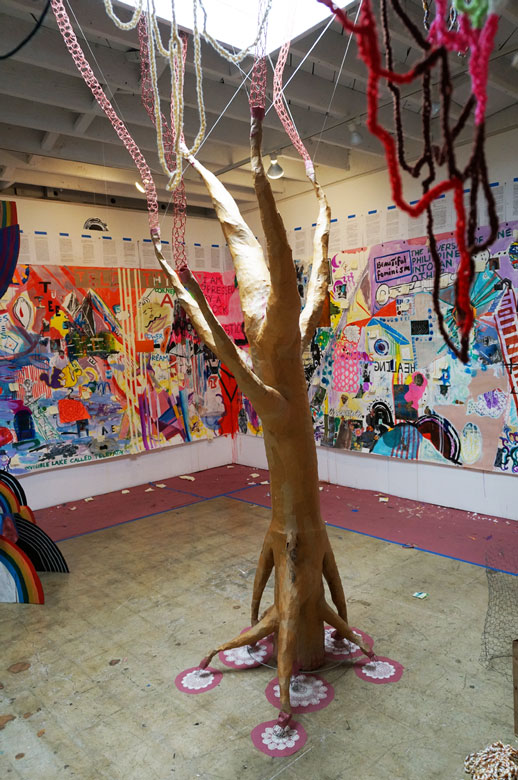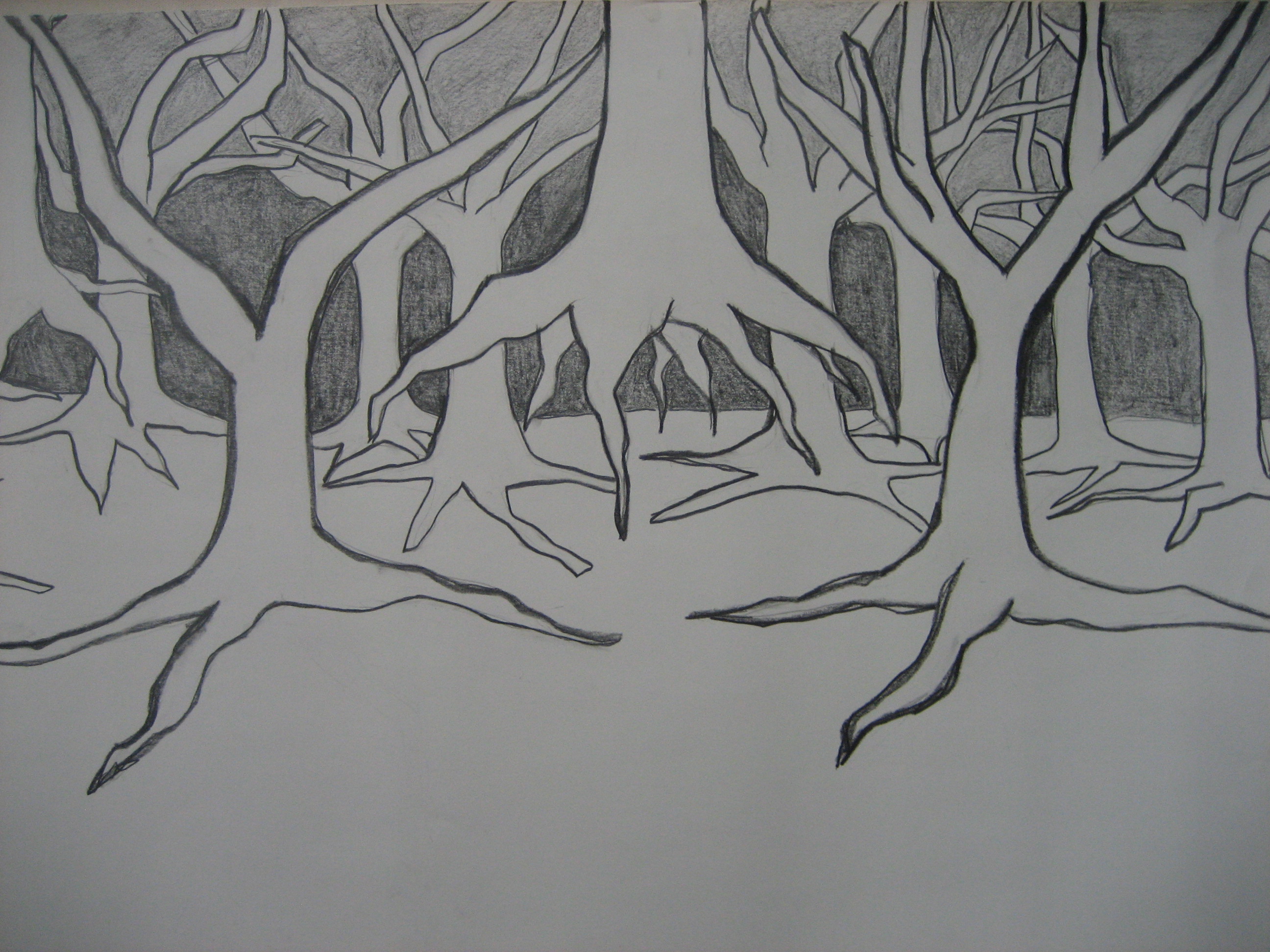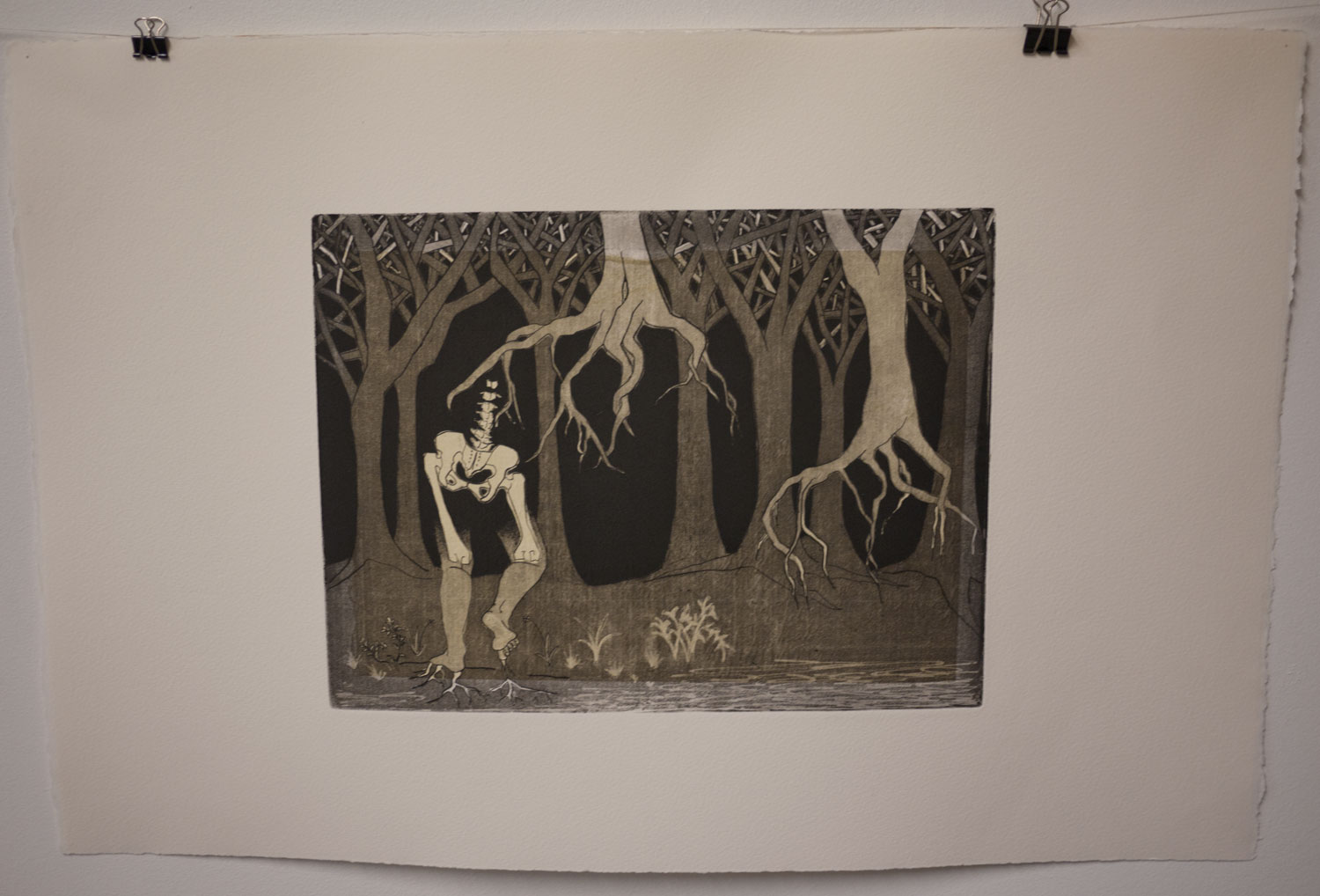In 2013 I was invited to participate in the art project Forêt Intérieure/Interior Forest with Alexandra Grant and a growing community of artists, illustrating the work "Phillipines," by Helene Cixous. I re-worked one of the trees from a previous installation, and titled it "Inside Outside In." The project was featured in KCET's Artbound

I am interested in creating spaces that evoke a specific quality of interaction: The claustrophobia of a crowded bus becomes the quality of standing in a cornfield or a forest of trees. The feeling of claustrophobia becomes a feeling of comfort and support. The trees themselves are bodies.

The forest in the gallery satisfies the desire to preemptively fill up the space that exists before the show begins, the empty gallery, as a way of dealing with my feelings of fear and nakedness when exhibiting my artwork, a feeling of stark exposure, of stage-fright. The forest provides shelter from the perceived judgment of the crowd.
 The project of making the trees in “outside inside out” started when I was organizing a small community gallery space. A friend and I designed an installation about the artificial wilderness environments of a zoo and a tree we made became a central figure in the final installation, serving as a visual focal point in the space. The distinct presence of that figure inspired me to envision the space filled with trees reminiscent of a crowd in the room. Perhaps this was because of my experience with the space itself, where moving through the crowd at times felt like moving through a forest of bodies. The idea of placing large objects in the space where a crowd gathered intrigued me. I wanted to see what people would do when confronted with these objects, especially because in creating them, I strove to keep them on a similar scale with the human body itself. How would it change the interactions that customarily occur at a gallery? Would people hold conversations between branches, partly obscured by the protruding limbs? What is the critical mass of bodies that can be together in a space, between the awkward emptiness of a missing audience, and before claustrophobia sets in? Will the tree bodies interrupt socializing and prompt the audience to have a fuller experience of the ‘art?’
The project of making the trees in “outside inside out” started when I was organizing a small community gallery space. A friend and I designed an installation about the artificial wilderness environments of a zoo and a tree we made became a central figure in the final installation, serving as a visual focal point in the space. The distinct presence of that figure inspired me to envision the space filled with trees reminiscent of a crowd in the room. Perhaps this was because of my experience with the space itself, where moving through the crowd at times felt like moving through a forest of bodies. The idea of placing large objects in the space where a crowd gathered intrigued me. I wanted to see what people would do when confronted with these objects, especially because in creating them, I strove to keep them on a similar scale with the human body itself. How would it change the interactions that customarily occur at a gallery? Would people hold conversations between branches, partly obscured by the protruding limbs? What is the critical mass of bodies that can be together in a space, between the awkward emptiness of a missing audience, and before claustrophobia sets in? Will the tree bodies interrupt socializing and prompt the audience to have a fuller experience of the ‘art?’

The work of making the trees is fundamentally driven by material considerations. I am making use of an overabundance of paper and restoring that material to its original form, a tree. My formal artistic training has taught me that developing a deep relationship and dialogue with the materials of art making is crucial in making beautiful, meaningful objects. What is the state of material in the 21st century, in the information age? All material has a history, a lineage, a relationship to the matrix of deforestation, pollution, consumption, and the economic imperatives that demand us to look away. Even as I use recycled materials, I find it absurd and futile to address climate change with recycling, green-washing a problem that is much deeper and on a much larger scale. I am amused by the self-satisfaction we find in throwing things into a differently colored bin, while participating in a system of consumption that still is based on disposability. What does it feel like to not have the option of throwing things away? Is there such a place as “away?”
I want to examine compulsive collecting as a form of resistance to disposability. Is it possible for our collective detritus to be repurposed as decoration? Art and the capacity of humans to experience and value beauty and pleasure is crucial in transforming our relationship with the material world.